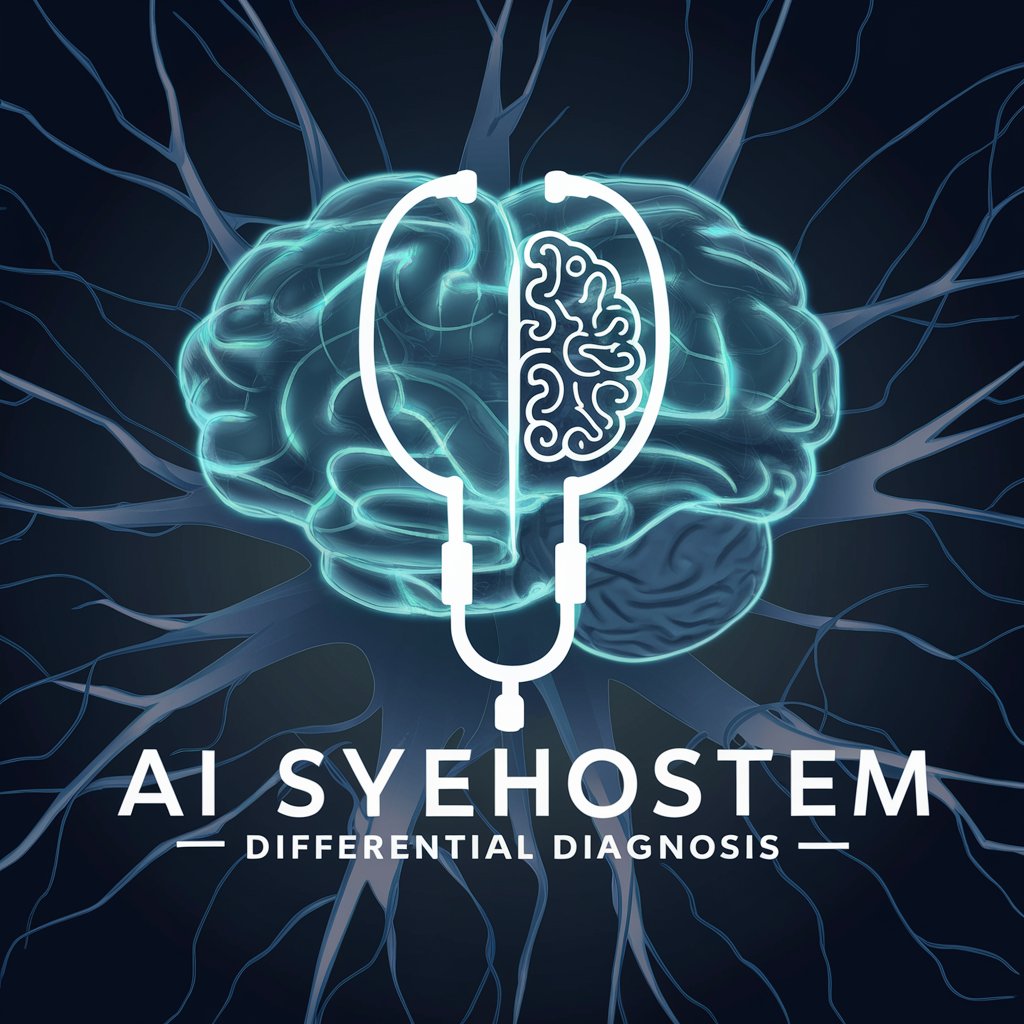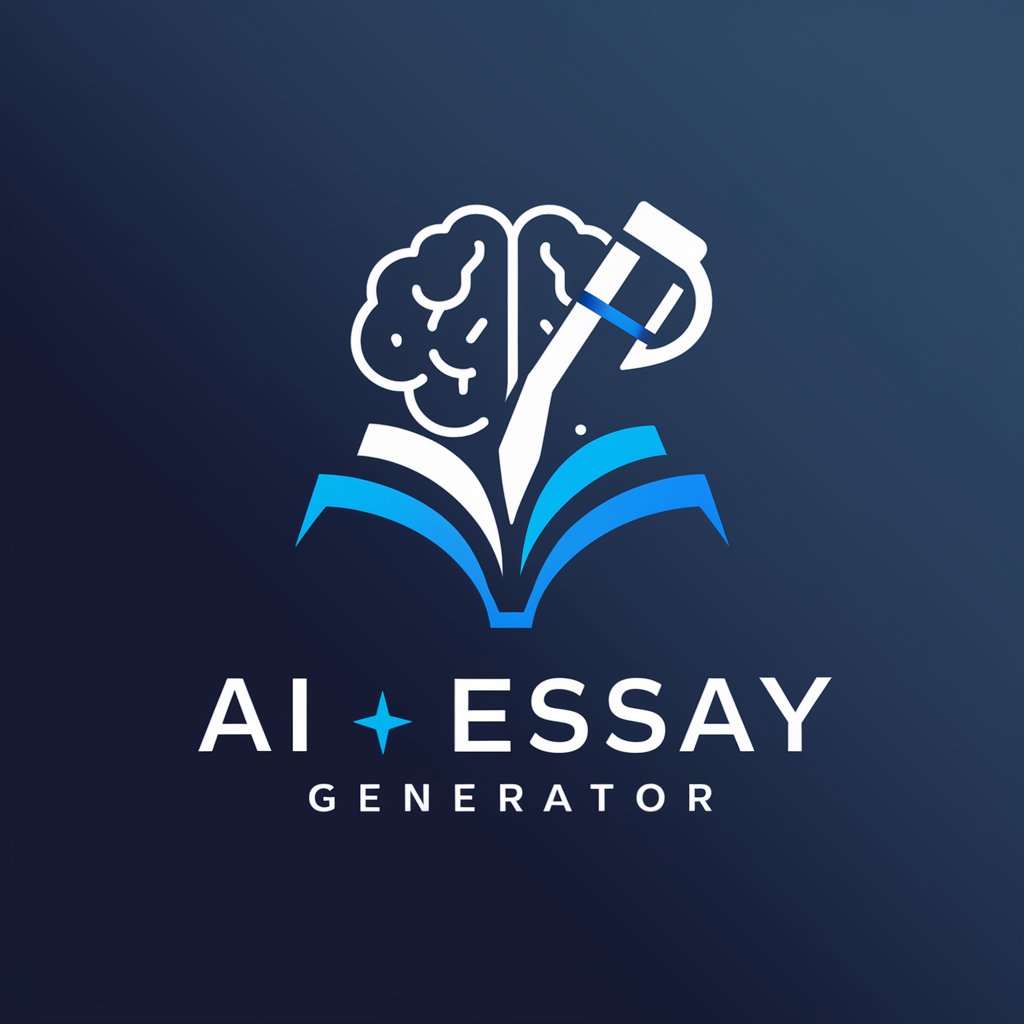Differential diagnosis - AI-powered diagnostic aid

Welcome! Let's work through your patient's differential diagnosis.
Streamlining Diagnosis with AI
Given a patient's demographics and clinical findings,
Considering the provided symptoms and lab results,
Based on the history and physical exam findings,
Using the objective information from the patient's evaluation,
Get Embed Code
Understanding Differential Diagnosis
Differential diagnosis is a systematic method used by healthcare professionals to identify a disease or condition that explains a person's symptoms and signs. It involves comparing and contrasting the likelihood of several diseases that might explain the clinical presentation of a patient. The process starts with the consideration of the most probable diagnosis based on the initial clinical assessment, followed by the evaluation of alternative diagnoses through the collection and analysis of further medical history, physical examination findings, and diagnostic testing. This approach helps in narrowing down the possibilities to the most likely diagnosis, thereby guiding appropriate treatment. For example, if a patient presents with a cough, fever, and shortness of breath, the differential diagnosis could range from common conditions like pneumonia or influenza to more severe illnesses such as pulmonary embolism or lung cancer, depending on additional findings and risk factors. Powered by ChatGPT-4o。

Main Functions of Differential Diagnosis
Systematic identification of potential diagnoses
Example
Differentiating between types of headaches (e.g., tension, migraine, cluster) based on specific characteristics and associated symptoms.
Scenario
A clinician uses the patient's headache pattern, intensity, duration, and associated features like photophobia or aura to narrow down the cause of headache.
Guiding diagnostic testing and evaluation
Example
Determining the need for specific lab tests or imaging studies to differentiate between similar presenting conditions.
Scenario
For a patient with abdominal pain, deciding between an ultrasound to investigate gallstones and a CT scan to look for appendicitis based on the pain's location and nature.
Facilitating appropriate treatment planning
Example
Choosing the correct antibiotic for a suspected bacterial infection after considering potential resistant organisms.
Scenario
In a community with a high prevalence of MRSA, opting for antibiotics that cover this organism in a patient with a skin infection.
Preventing misdiagnosis and medical errors
Example
Re-evaluating initial diagnoses when patients do not respond to standard treatments, to consider less common diseases.
Scenario
A patient treated for asthma without improvement may be reassessed for vocal cord dysfunction or a foreign body aspiration.
Ideal Users of Differential Diagnosis Services
Healthcare Professionals
Doctors, nurses, and other medical practitioners who need to make accurate diagnoses based on patient presentations. They benefit from using differential diagnosis to ensure comprehensive patient assessment and to avoid overlooking rare or serious conditions.
Medical Students and Residents
These learners can use differential diagnosis as an educational tool to enhance their clinical reasoning skills and to prepare for patient care responsibilities. It helps them understand the rationale behind diagnostic and treatment decisions.
Healthcare Researchers
Researchers focusing on clinical decision support systems, diagnostic algorithms, and improving diagnostic accuracy. They benefit from understanding the complexities and methodologies of differential diagnosis to develop more effective diagnostic tools and protocols.
Patients seeking second opinions
Individuals looking for a comprehensive review of their symptoms and diagnosis, especially in cases of rare, complex, or chronic conditions that are difficult to diagnose. This service can provide clarity and direction in their healthcare journey.

How to Use Differential Diagnosis
1
Begin by visiting yeschat.ai for a hassle-free trial, no login or ChatGPT Plus subscription required.
2
Enter patient information including demographics, symptoms, history, physical exam findings, labs, and other objective data into the provided template.
3
Submit the entered data to receive a ranked list of potential diagnoses, each supported by the information you provided.
4
Review the list of diagnoses, noting the supporting findings and those that are less common for each diagnosis.
5
Use the differential diagnosis as a guide for further investigation, testing, or referral to narrow down the exact cause of the patient's condition.
Try other advanced and practical GPTs
Empathy AI 🌟
Understanding You, Enhancing Conversations

Schweizer Lernbegleiter
Empowering Swiss Learning with AI

Agile Coach
Empowering Agile Excellence Globally

Kindhearted Companion
Empowering emotions with AI

Villamedia Explorer
Empowering journalism with AI insights

Blender Buddy
Simplifying Complexity with AI

Bible Chat
Explore the Bible with AI-Powered Insights

Cinema Decoder
Unlocking movies' psychological depths.

AI Essay Generator 💬
Crafting Essays with AI Precision

AI美女メーカー
Craft Your Dream Lady with AI

LSI Extractor [WordsAtScale]
Unlock SEO potential with AI-driven insights
![LSI Extractor [WordsAtScale]](https://r2.erweima.ai/i/-7l_OwQORiyWa9ySkgGHJg.png)
Linked In Guru
Empower Your LinkedIn Presence with AI

FAQs on Differential Diagnosis
What exactly is Differential Diagnosis?
Differential diagnosis is a systematic method used by healthcare professionals to identify a disease or condition that explains a person's symptoms and signs. It involves comparing and contrasting various conditions that could be causing an individual's clinical presentation.
How accurate is the Differential Diagnosis tool?
The accuracy of the Differential Diagnosis tool depends on the completeness and accuracy of the information provided by the user. It is designed to narrow down possibilities and guide further investigation rather than provide a definitive diagnosis.
Can I use Differential Diagnosis for any symptoms?
Yes, you can use Differential Diagnosis for a wide range of symptoms and conditions. However, it is most effective when you provide detailed and specific information about the patient's presentation.
Is the tool suitable for non-medical professionals?
While the tool can provide insightful information, it is primarily designed for use by healthcare professionals. Non-medical users should consult with a healthcare provider for diagnosis and treatment.
How can Differential Diagnosis assist in clinical practice?
Differential Diagnosis can help healthcare professionals quickly generate a list of potential diagnoses, prioritize testing and treatment strategies, and identify when specialist referral is necessary.
